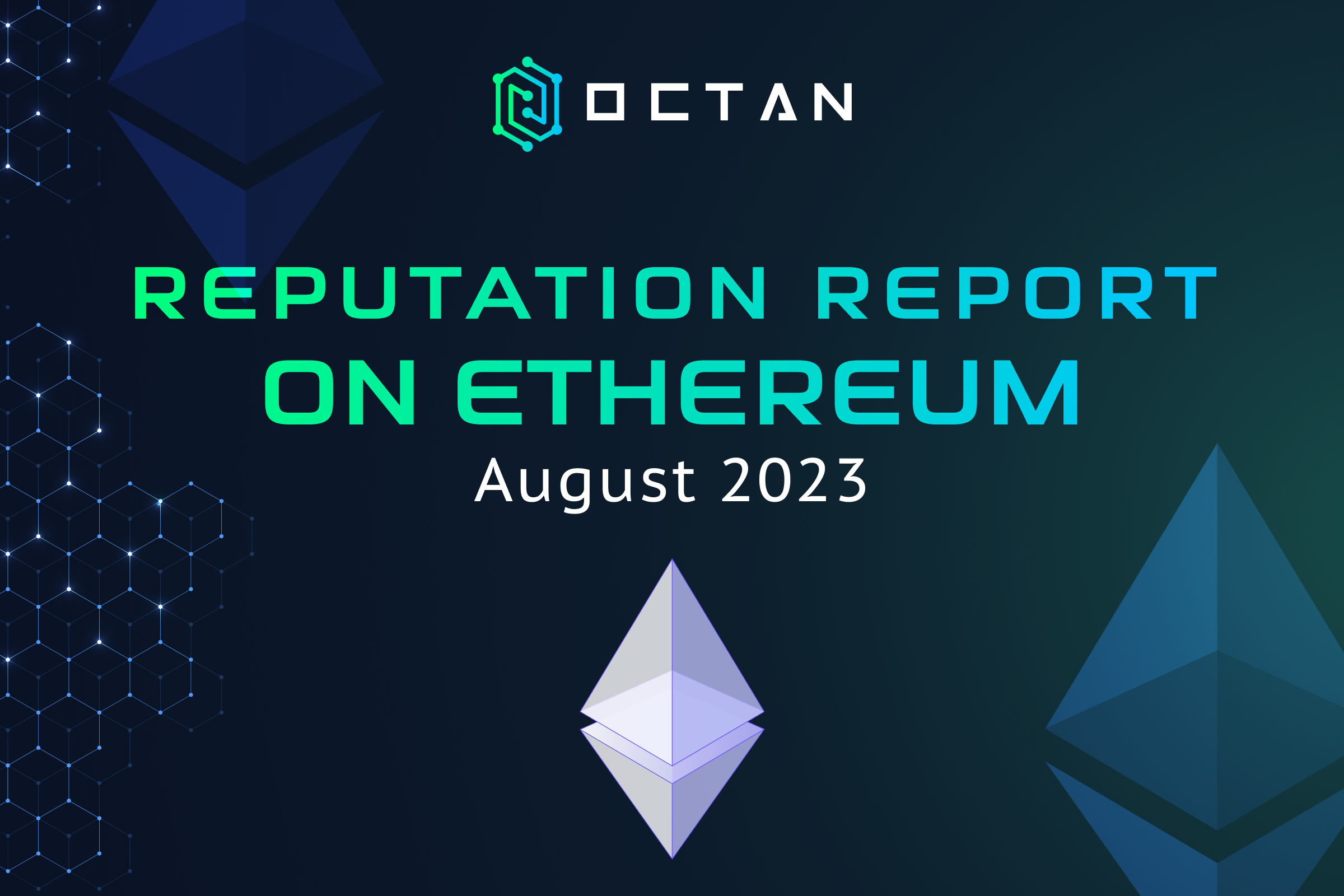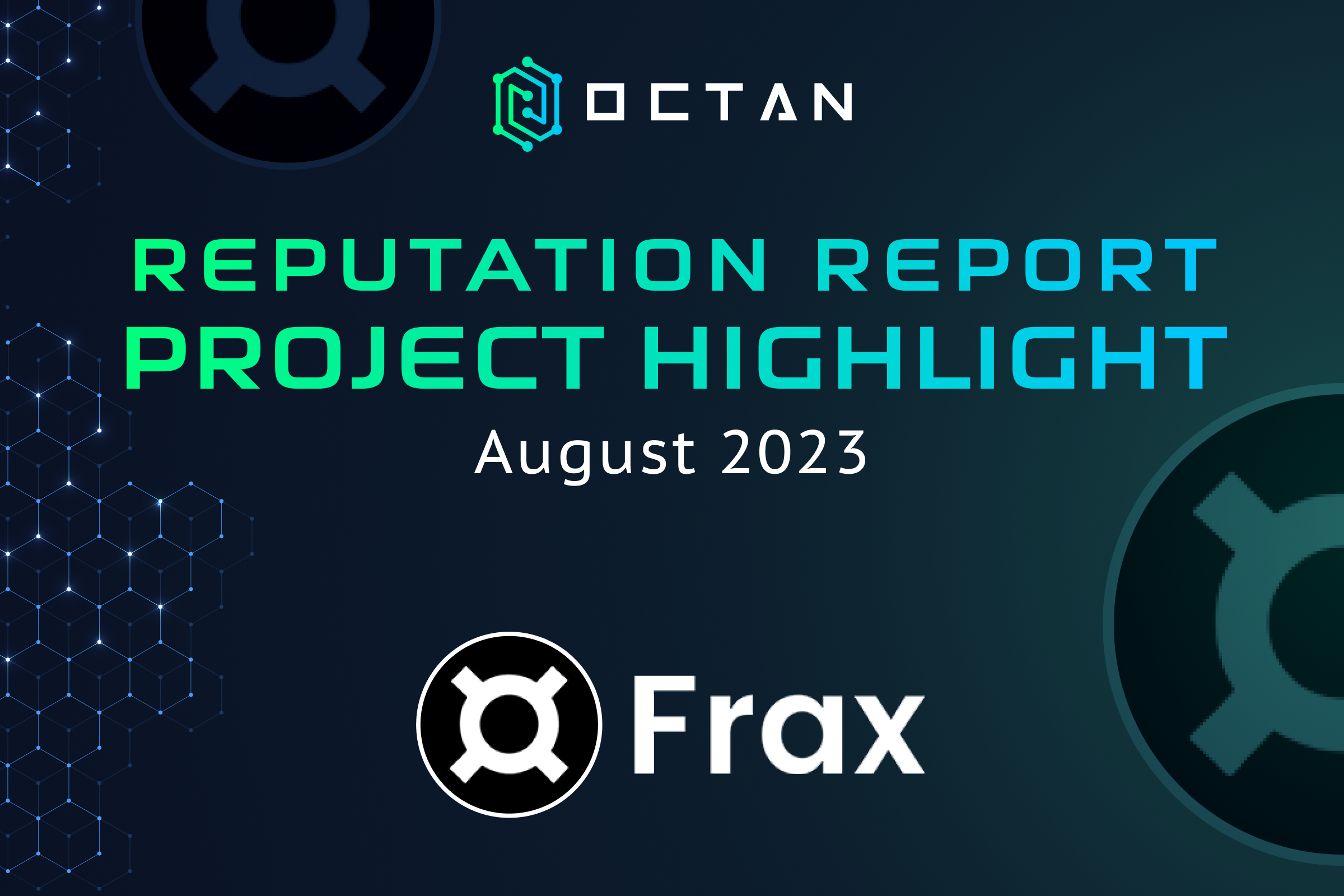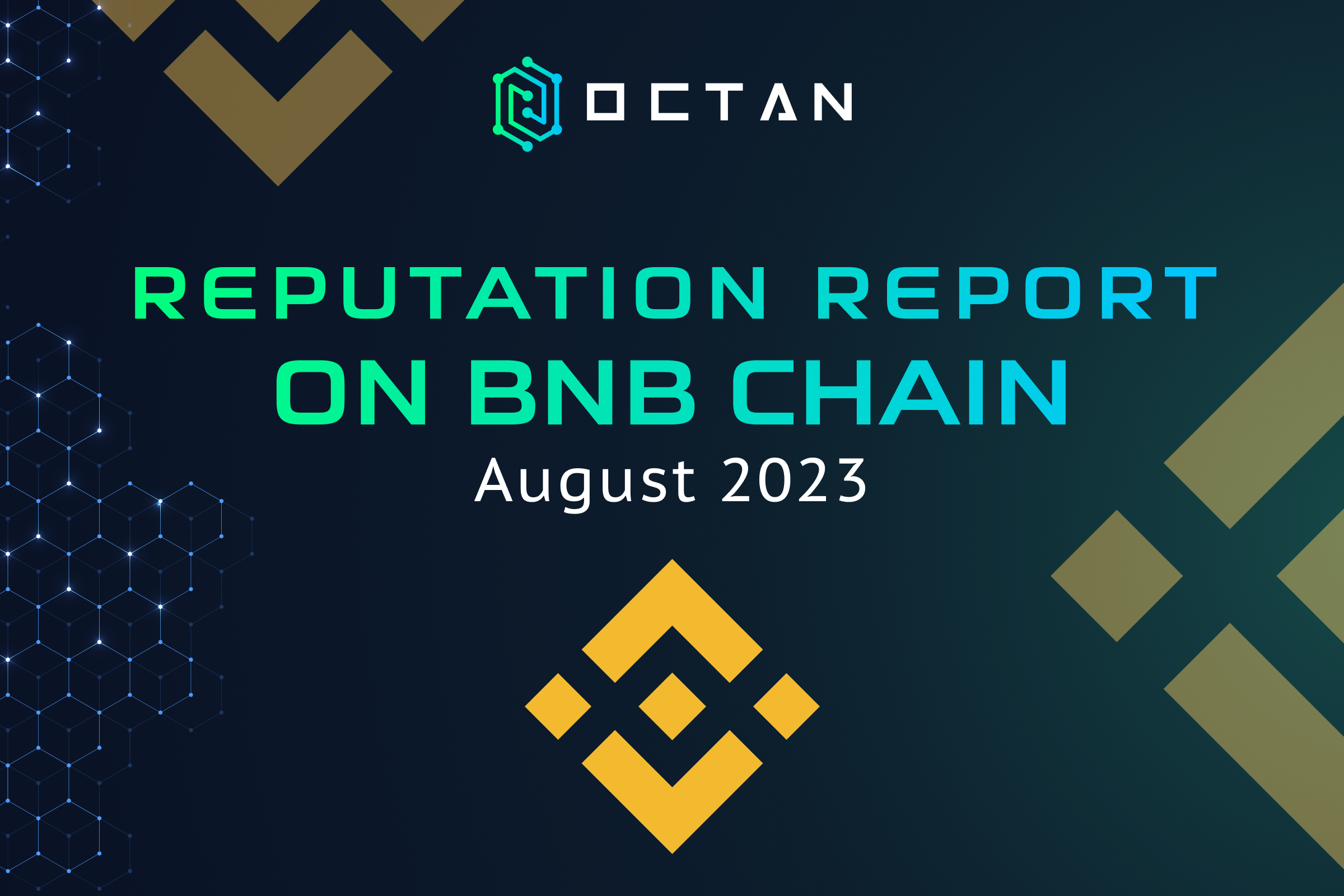This article analyzes onchain reputation ranking of the top rollup layer-2s. The total reputation value of the 4 largest rollup layer-2s is 28,883 scores, accounting for 7.4% and 2.9% reputation of the contract group and the entire Ethereum ecosystem, respectively. It is interesting that zkSync and Starknet have reputation of 21k+ and 5k+ scores, with 2M+ and 609K+ unique active wallets (UAWs), respectively, super higher than Arbitrum and Optimism. However, average user quality (measured by average UAW reputation score) on Arbitrum and Optimism is multiple-times greater than that of zkSync and Starknet.
Briefing Reputation Ranking on Ethereum
Octan Reputation Ranking System assigns 1,000,000 global reputation scores (GRS or RS) distributed for all public addresses (accounts) on the entire Ethereum ecosystem within the calculated range. The analysis covered a block range spanning from 16,000,000 (18/11/2022) to 17,823,594 (01/08/2023), processed 1.8M+ blocks, 566M+ transactions, included 41M+ public addresses (1.6M+ contracts and 39M+ EOAs). Octan Reputation Score (RS) measures the importance or impact of Web3 accounts (including contract addresses and EOA wallets), quantitatively computed from onchain transactions via adaptive PageRank algorithms (visit Octan Reputation Ranking System for details).
Reputation ranking on contract group
The number of computed contracts is 1,627,154 equivalent to 3.93% of the total considered addresses, but their total reputation values 392,385 scores accounting for 39.24% reputation points on the entire ecosystem, while the rest for all EOAs (i.e. wallets). Considering the group of all identified and classified contracts, DeFi, NFT, stablecoin are the Top3 categories on Ethereum, respectively accounting for 15.7%, 11.5%, 9.96% reputation value of the contract group. Surprisingly, meme tokens take 5.4% of reputation value, while SocialFi, GameFi are 1.74%, 1.01%, respectively.

Partition on contract group by reputation scores
Reputation ranking on EOA group
In this section, we explore the partitioning of Global Reputation Scores (GRS or RS) on 39,739,114 externally owned accounts (EOAs). Excluding 7,883,883 EOAs with zero-GRS, we divide the non-zero EOA group into six partitions based on ranges of reputation scores: Lowest, Low, Medium, Experience, High, and Highest.
Status of Layer-2s
Optimistic rollups and ZK-rollups are the most promising technologies significantly improving the scalability of Ethereum. Since the first universal optimistic rollup L2 (i.e. Optimism lived in Jan 2021), the total locked value (TVL) of rollup protocols has been growing fast from almost nothing to $9.4B dollars at the time of writing ( a bit lower than ATH of $10.7B in April 2023). The TVL are shared by Arbitrum One ($5.11B ~ 54.5%) and Optimism ($2.37B ~ 25.3%), and others for the rest. Compared to the total market of rollup L2s, the share of all ZK-rollup protocols is very small but surging. The following table presents Top13 rollup L2s, accounting for 97.47% of the total TVL.
EVM* means EVM-compatible. OVM stands for Optimistic Virtual Machine, being similar to EVM but independent from it and allows fraud proofs to be executed.
Reputation Analysis on the Top rollup L2s
In this section, we investigate several contracts of the most popular rollup layer-2 protocols on Ethereum.
- Arbitrum is the largest layer-2 ecosystem by TVL, built on optimistic rollup, widely adopted on Arbitrum One and Nova. It has released an Arbitrum stack (Nitro, Orbit, Rollup, AnyTrust) to promote developers building on its ecosystem.
- Optimism (or OP Mainnet) is the first universal optimistic rollup, second largest layer-2 by TVL. OP Stack, generalized from OP Mainnet, is open-source, the most widely adopted optimistic stack for layer-2 scaling. OP Stack and Optimistic Virtual Machine is powering many layer-2s, e.g. Base, Mantle, Metis Andromeda, Boba Network, Aevo, Zora Network and opBNB on BNB Chain.
- zkSync Era is a EVM-compatible (i.e. Type 2 zkEVM as classified by Vitalik Buterin), the largest ZK-rollup L2 by TVL. zkSync Era and zkSync Lite are layer-2 scaling solutions developed by Matter Labs.
- Starknet is a non-EVM-compatible (i.e. Type 4) layer-2. Its ZK-rollup technology is powering dXdY, Immutable X, Apex, Sorare, rhino.fi.
We investigates contracts of rollup layer-2 protocols on Ethereum, their reputation scores (RS), in-connection (In-Degree or InDeg), Out-Connection (Out-Degree or OutDeg), total transacted volume (TX Vol) multiplied by 1000 USD, total gas used, total unique active wallets (UAWs), average reputation score (ARS) per UAW excluding EOAs in the highest RS partition. All the studied L2 contracts fall in High and Excellent contract group, while their ARS per UAW is mostly higher than Experience partition (0.03), showcasing a good user quality compared to the average on Ethereum.
After consolidating the contracts into identified layer-2 protocols, the total reputation value of the 4 largest rollup layer-2s is 28,883 scores, accounting for 7.4% and 2.9% reputation of the contract group and the entire Ethereum ecosystem, respectively. It is interesting that zkSync and Starknet have reputation of 21k+ and 5k+ scores, with 2M+ and 609K+ unique active wallets (UAWs), respectively, super higher than Arbitrum and Optimism. However, average user quality (measured by average UAW reputation score) on Arbitrum and Optimism is multiple-times greater than that of zkSync and Starknet. We also segment users of the protocols by reputation scores. The surge of reputation and UAWs on zkSync and Starknet are likely results of the hype on ZK-rollups and users’ anticipation of valuable airdrops similar to Arbitrum and Optimism. That also gives a hint to explain the lower average reputation score per UAW on zkSync and Starknet (wherein many airdrop hunters come). Arbitrum and Optimism, on other hand, has smaller numbers of users but their quality is much higher. 


About Octan
Establish Trust and Credibility in Web3
Octan Network is an award-winning data analytics provider in the Web3 space, achieving recognitions from industry-prominent organizations: BNB Grant DAO on Dorahack, Web3 Matching by BNB Chain, Octopus Accelerator Program, DFINITY Developer Grant Program.
Octan Network, instead of focusing on cash-flow & financial analytics, we use our unique Ranking Reputation System (RSS), inspired by Google’s PageRank, to provide reputation and ranking scores for accounts across chains and applications. By qualifying, classifying, evaluating, and extracting social insights from Web3 entities, our system provides the best quality analytics and the most multi-dimensional insights on Web3. Applications of Octan Reputation Ranking & onchain analytics:
- User segmentation: By leveraging new data sources and advanced analytics tools, RRS provides valuable insights about entities in the Web3 ecosystem. This enables projects and marketing agencies to utilize reputation scores and analysis reports to effectively classify, qualify, and segment users and audiences in the Web3 space, aiding in user acquisition strategies.
- Investment research: Investors can utilize the RRS to gain a comprehensive assessment of a project by analyzing the activity levels of the project’s contracts and the quality of user wallets interacting with those contracts; helps investors easily select promising projects based on reputation and performance, enabling them to conduct more in-depth financial analysis
- Onchain research and analysis: Researchers and analysts can leverage the RRS to identify emerging trends and opportunities in the Web3 space through the transformations in the reputation of Web3 entities. By studying these reputation changes, they can gain valuable insights into market dynamics, user behavior, and ecosystem developments.
Octan’s onchain analytical reports provide a comprehensive view of the Web3 ecosystems and its entities. These reports, produced by Octan data analysis experts, offer reputation scores of notable entities and segmentation, providing valuable social insights and social interaction within the Web3 space. Furthermore, Octan offers visualizations showcasing relationships and connections between Web3 entities. This allows clients to easily comprehend and interpret the reputation data generated by Octan.
- Visit our Gitbook at https://docs.octan.network/ to learn more.
- Visit Octan comprehensive reputation reports.
- Read Octan Reputation and Onchain Analysis Blogs https://blog.octan.network/
- For access to the detailed ranking table and more comprehensive information, please feel free to contact us ([email protected]).
- Visit our socials: Twitter | Facebook | Telegram | Linkedin






